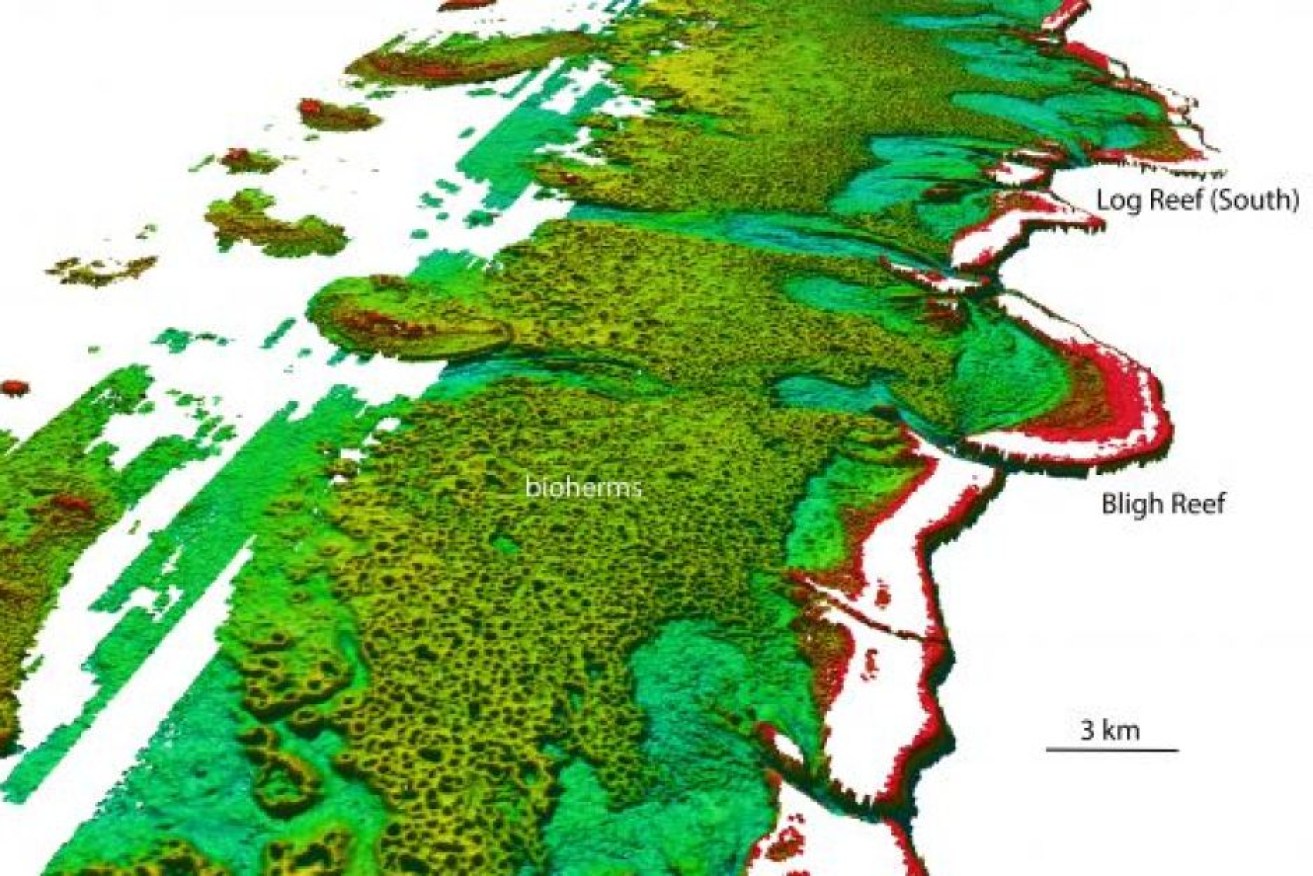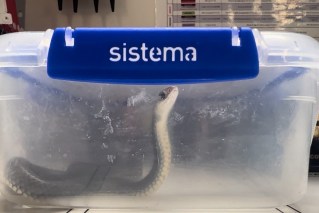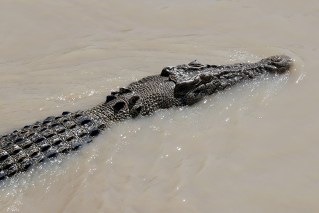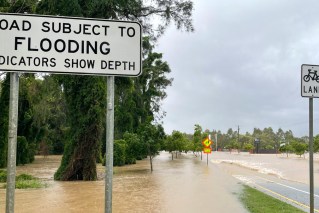New reef system discovered near Great Barrier Reef

High-resolution seafloor data has revealed a vast reef on the deeper seafloor just behind the Great Barrier Reef. Photo: James Cook University
Australian scientists working with laser data from the Royal Australian Navy have discovered a reef system covering around 6,000 square km, north of the Great Barrier Reef.
James Cook University’s Dr Robin Beaman explained the ‘inter-reef’ structure sits just behind the familiar coral reefs, on a deeper seafloor.
“The mapping that had been done earlier said that there are about 2,000 square km off the Great Barrier Reef inter-reef area. Well, we’ve tripled that now,” Dr Beaman said.
“It’s a really big inter-reef area that we hadn’t really identified before.
“We refer to these reef structures as bioherms, these structures are around 20m thick,” explained Dr Beaman.
“These bioherms are made by Halimeda which is green algae and when it dies it generates these white, almost cornflake-like flakes of limestone.
“And what we know is that over perhaps a 10,000-year period they’ve built up these remarkable structures.”
Scientists puzzled by reef’s ‘donut’ shapes
Lead author of the research paper, Queensland University of Technology’s Mardi McNeil, said she was puzzled by the shape of the structures they discovered.
“When the three dimensional shape of them was revealed, it was really surprising,” Ms McNeil said.
“They form these fields of donut-shaped structures … sometimes they’re like singular circular rings, sometimes in groups of three or four.
“They are massive, each ‘donut’ if you like is 250-300m across from crest to crest and there is just fields of them.”
With the tops starting at 20 to 50m deep, few have ventured to see the reef with their own eyes.
“It’s not a typical easily-accessible place where scuba divers would be diving,” Ms McNeil said.
But she said people who had made the dive had recounted scenes varying from ‘they’re covered in this lush thick veneer of living green’ to ‘just white limestone flakes, like a white desert’.”
Sediment tells a story ‘like tree rings’
Dr Beaman said the discovery opened up many other new avenues of research.
“What does the sediment itself tell us about the past climate on the Great Barrier Reef? Just like tree rings — the rings can tell you the age of when it was formed and the environment it was formed in. So you’ve got 20m thick piles of sediment that can tell you an awful lot about past oceanographic history,” he said
“Another big question is ‘what kind of marine life is growing in and around these bioherms?'”
He said future research would require sediment coring, sub-surface geophysical surveys, and employing autonomous underwater vehicle technologies to unravel the physical, chemical and biological processes of the structures.







